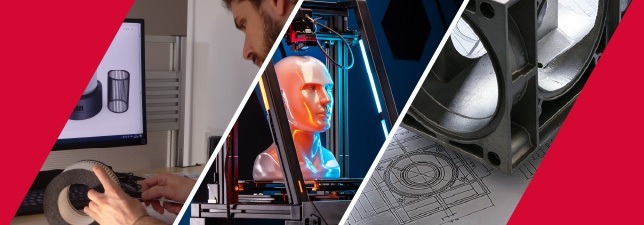Questions & Answers
Make your choice
Delivery
Printing
Assemble and Go !
Assembly takes 30 minutes, then you will be protected
Discover more about 3D printing safety guidelines and actual tips, visit our blog Alveo3D
In general
How do Alveo3D kits work ?
Alveo3D kits are based on a filter adapted for 3D printing needs, which vacuums the polluted air in your enclosure in order to keep your environment as clean as possible.
Are 3D printers really polluting ?
When filaments are heated and melted, they emit Volatile organic compounds (VOCs) and nanoparticles. Your environment can be impacted by many factors. Pollutants will exceed established thresholds in small spaces and poorly ventilated areas. Nanoparticles can go inside one’s blood and cause critical neurological and cardiovascular diseases… VOCs can be toxic and carcinogenic.
Alveo3D kits
What is inside the kit ?
They are composed of STL files to print, a high-pressure fan, an electronic board, the P3D filter, a power supply, sealing cords and screws.
You will find assembly instructions, a cutting template for the wall mounted kit type and get access to all STL updates.
What are the differences between our kits ?
Which one should you print ?
According to our design, the wall mounted type is much better for non-airtight enclosures. The free-standing kit is made for airtight enclosures and can help you print at a higher temperature.
Are Alveo3D kits noisy ?
Our design forces you to use kits inside your enclosure to reduce the noise, so that it become very reasonable in an office or a living room. We measured 51dB inside an enclosure for AlveoONE and about 48dB for AlveoONE-R.
Does the V2 controller board is compatible with Alveo3D kits ?
Yes, no modifications are required. The board in the Alveo3D kits already has a connector to be plugged into the V2 controller. You will need to connect them together and move the jumper on the V1 board.
Where do we build Alveo3D kits ?
Alveo3D kits are designed and packaged in France, in Chambéry.
Alveo3D filterbox
When and where can I download the files to print ?
You can directly download all files on our main page or you can wait to get a link in the purchase confirmation email.
What is 3D file format?
The most common file format used is the STL (Standard Tessellation Language). STL files represent the surface geometry of a 3D object using a collection of triangular facets. This format describes the 3D model in terms of its surface geometry rather than its solid structure
How many parts in our kits ?
The AlveoONE-R filterbox is composed of only 5 parts.
The AlveoONE filterbox is composed of 7 parts, including a cutting template to help you cut your panel on your enclosure.
For how long do I need to print all parts ?
What printing materials do we recommend ?
What printing settings do we recommend ?
We recommend printing with 150-micron accuracy and a 0.4mm nozzle size.
Filter
How effective is the P3D filter ?
What is it made of ?
There is a nylon grid to protect the HEPA surface during the assembly, a cardboard frame, an HEPA H13 pleated filter and activated carbon granules in a honeycomb structure.
Does the filter reduce odors during printing ?
How long is the lifetime of our P3D filter ?
The filter lifetime is very variable, it depends on filament types, nozzle temperature, humidity, airflow speed … According to our tests, we recommend you replace the filter every 3 months for very intensive use or every 6 months for occasional printers.
3D printer enclosures
On what type of enclosure could I install alveo3D kits ?
Does my enclosure have to be fully airtight to make sure the filter will work ?
AlveoONE kit: it is necessary to have air flow to let the filter work. Your enclosure must have some air intake. In order to maximize the filtering efficiency, we recommend having an intake air surface slightly inferior to the filter surface.
AlveoONE-R kit: in order to have the most efficient recycling effect, you must have an airtight enclosure.
How thick can the panel be to mount alveoONE ?
Wall mounted enclosures can be built on 2 to 11 mm panels. You could mount AlveoONE on thicker panels with longer screws.
What are the overall dimensions ?
The thickness dimension will depend on your panel width. For a panel of 10mm, the filterbox width is about 65mm.
How does the filter affect the temperature inside the enclosure ?
In order to achieve the best efficiency, we choose the fan specifications based on air flow speed and flow velocity to ensure that the volume of air in the enclosure is treated within 2 minutes. (enclosure size reference: 600 x 600 x 600mm)
In our test room the temperature is about 20°C and inside our 3D printing chamber it is about 28°C with the wall mounted kit type when we print with a nozzle temperature of 240°C and a heatbed of 90°C. With the free-standing kit type we reach 350C inside the enclosure, there are no air leaks with similar printing settings.

